Steve Jobs was not the Steve Jobs in “Steve Jobs”
Steve Jobs died four years ago this past Monday. Today (Oct. 9), a movie based on the most complete biography of the former Apple CEO’s life was released in the US. Screenwriter Aaron Sorkin, famed for making films and TV shows involving smart people talking while walking around corners, said at a press interview Monday that he didn’t want to make a standard biopic of Jobs’ life. “I didn’t want to do just the greatest hits,” he said.
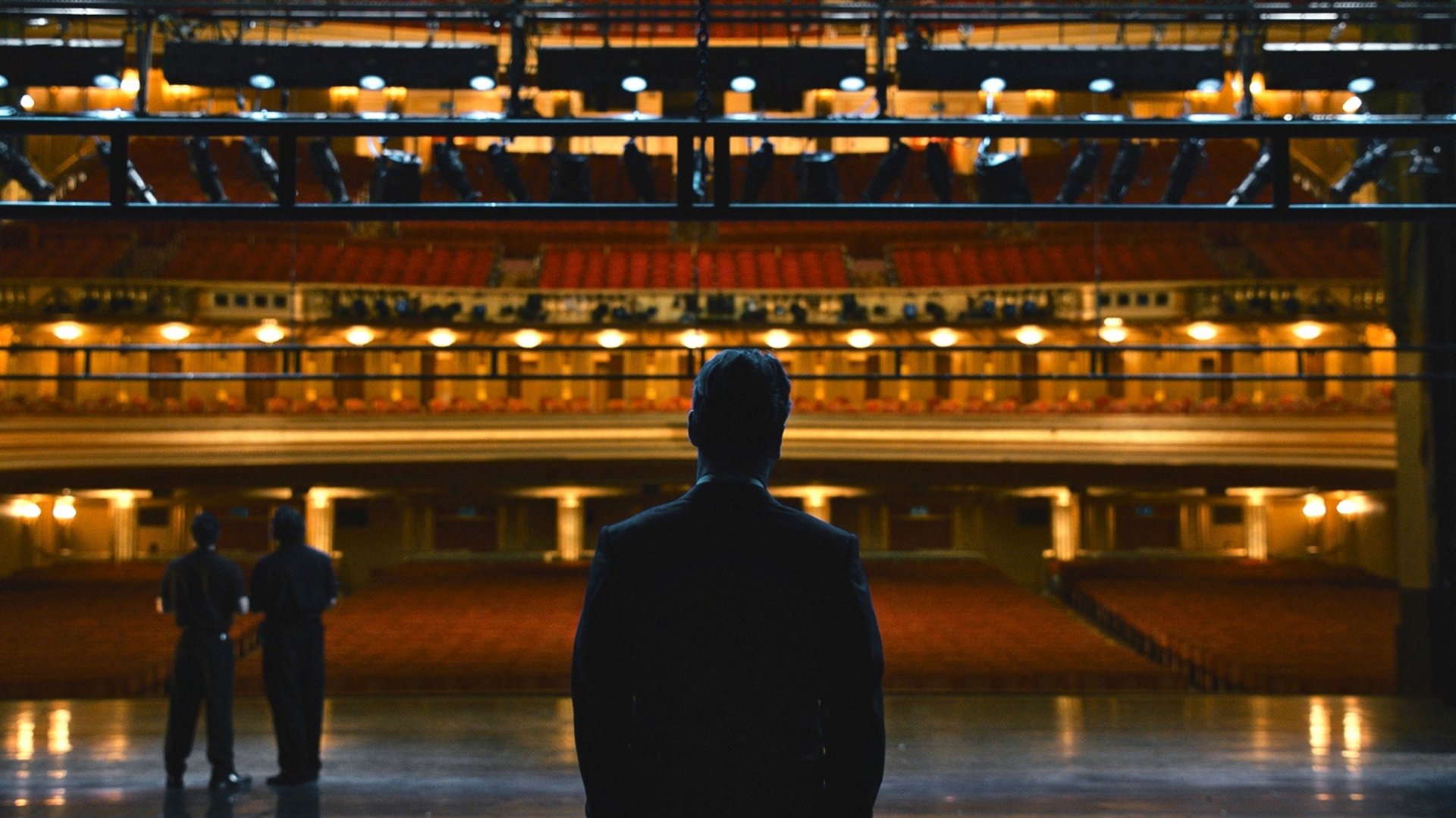

Steve Jobs died four years ago this past Monday. Today (Oct. 9), a movie based on the most complete biography of the former Apple CEO’s life was released in the US. Screenwriter Aaron Sorkin, famed for making films and TV shows involving smart people talking while walking around corners, said at a press interview Monday that he didn’t want to make a standard biopic of Jobs’ life. “I didn’t want to do just the greatest hits,” he said.
The film instead is constructed as a series of linked vignettes about three product launches that Jobs orchestrated. Sorkin chose to dramatize two commercial failures—the original Apple Macintosh in 1984 and the NeXTcube in 1988—and the iMac in 1998. Most of the products that Jobs oversaw as he put the company on the path to having more cash reserves than the US government—like the iPod, the iPhone and the MacBook—aren’t featured. And the movie conflates every struggle Jobs faced in his life—relationship issues, the paternity suit over his daughter, his being an orphan, his departure from Apple—into stressful moments that somehow managed to come to a head right before he was about to launch a product.
Arthur Holland Michel wrote for Vice that the only thing Michael Fassbender’s portrayal of Jobs appeared to inspire was fear. And he’s not wrong—the Steve Jobs in the movie is cold, singular in vision, and insecure. “I’m poorly made,” Fassbender’s Jobs finally tells his daughter near the end of the film, suggesting this is why he has been a terrible father over the years. Many of Jobs’ friends and colleagues have spoken out—whether they’ve seen the movie or not—that Jobs was in fact a caring person and the movie doesn’t represent him accurately.
Which isn’t surprising, really, considering that it’s a movie.
But it doesn’t really matter. All these inconsistencies aside, the film, directed by Danny Boyle—the man who showed us that a zombie movie can have heart, and that James Franco doesn’t really need two arms—is a powerful movie worth watching. It invokes what we remember about Jobs, without getting caught up in things like reality. Unlike Jobs, the film is not poorly made. However, it’s at best just a series of snapshots generally based on a man that didn’t code, didn’t design, and wasn’t an engineer, but is remembered as a visionary that “redefined the digital age.”
Here’s what Jobs looked like at each product launch in the film, and in real life.
1984: The Macintosh
The film
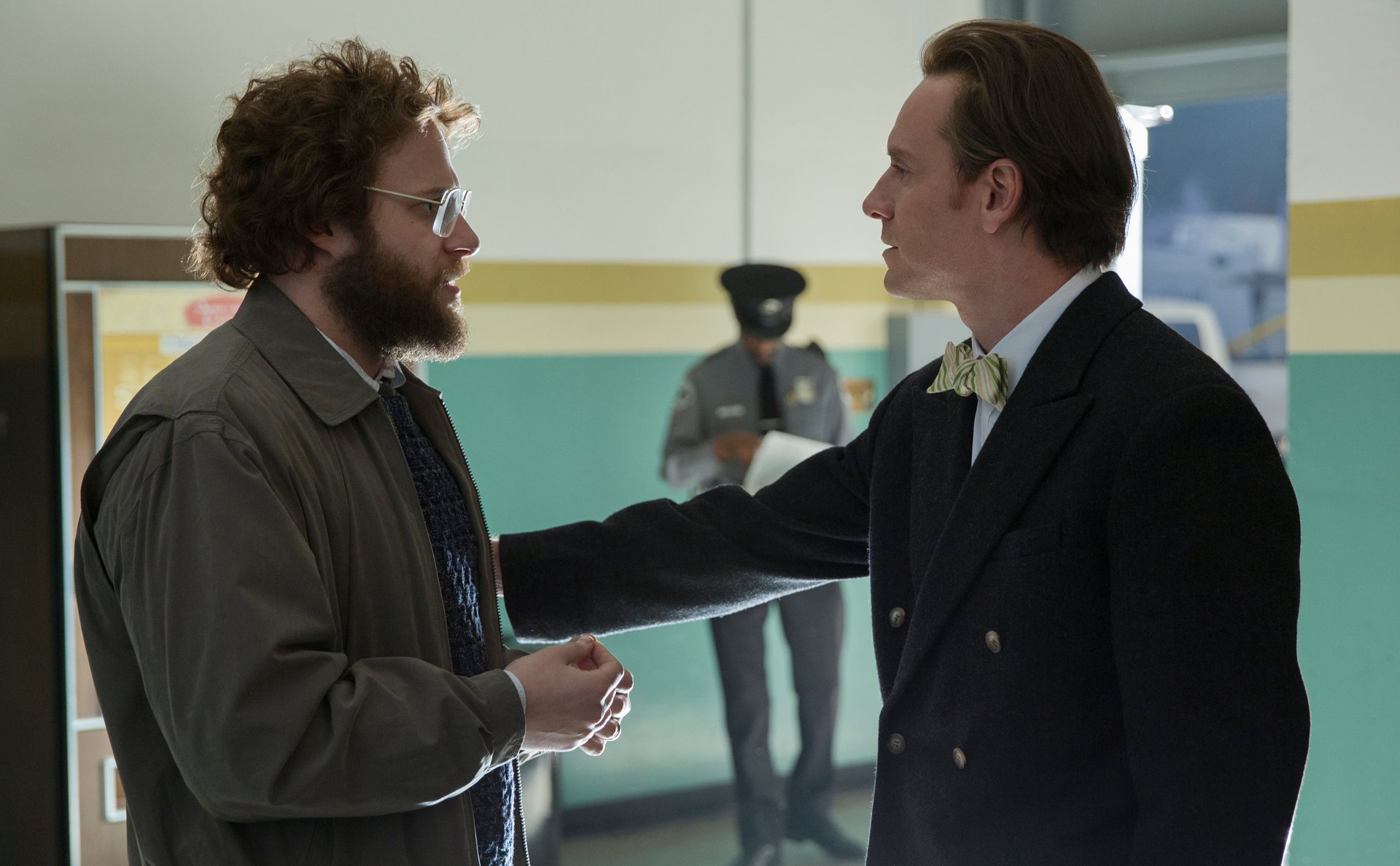
Real life
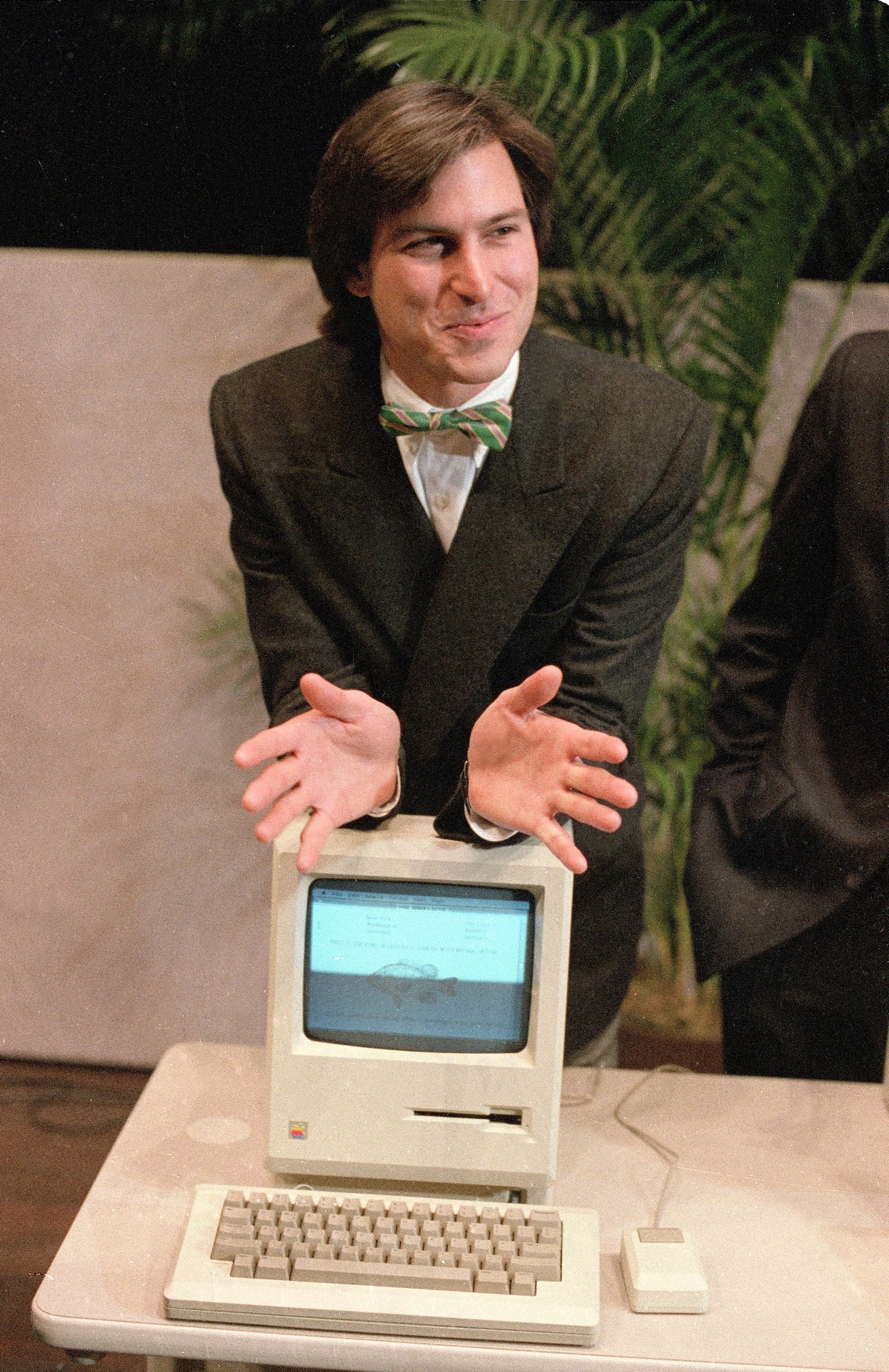
The film pretty much gets this one spot on. In the early ’80s, Steve Jobs—bowtie and double-breasted suit and all—dressed more like Bill Nye the Science Guy than the minimalist icon we remember.
1988: The NeXTcube
The film
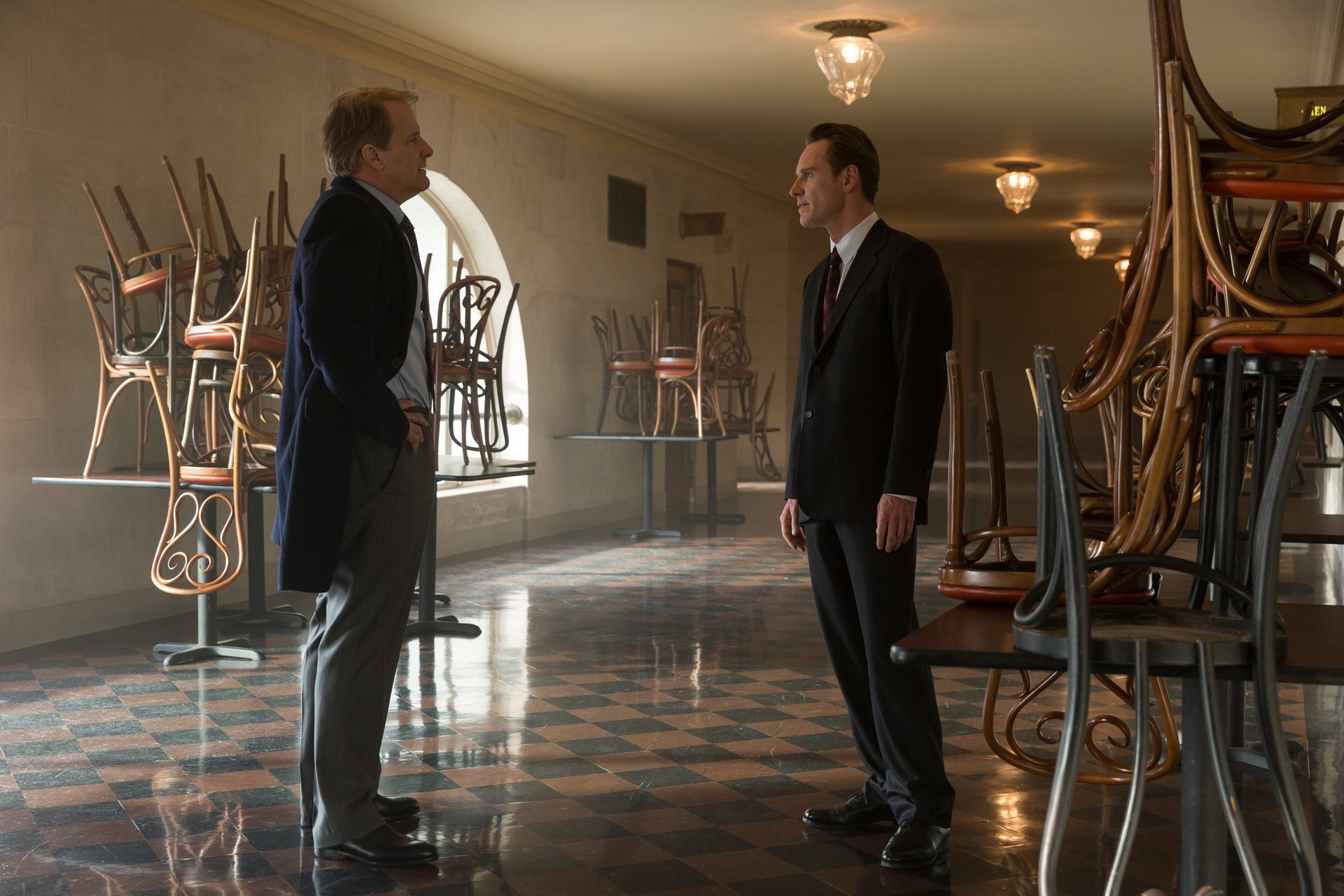
Real life

The film deviates a bit from reality here. Fassbender’s Jobs is skinnier, slicker, and dressed more in the archetypal mid-80s businessman style than Jobs really was when he launched the NeXTcube. Also, as Mike Elgan pointed out, Fassbender seems to have adopted a Brooklyn gangster accent to go with the power suit in this scene, even though Jobs was raised in California.
1998: The iMac
The film
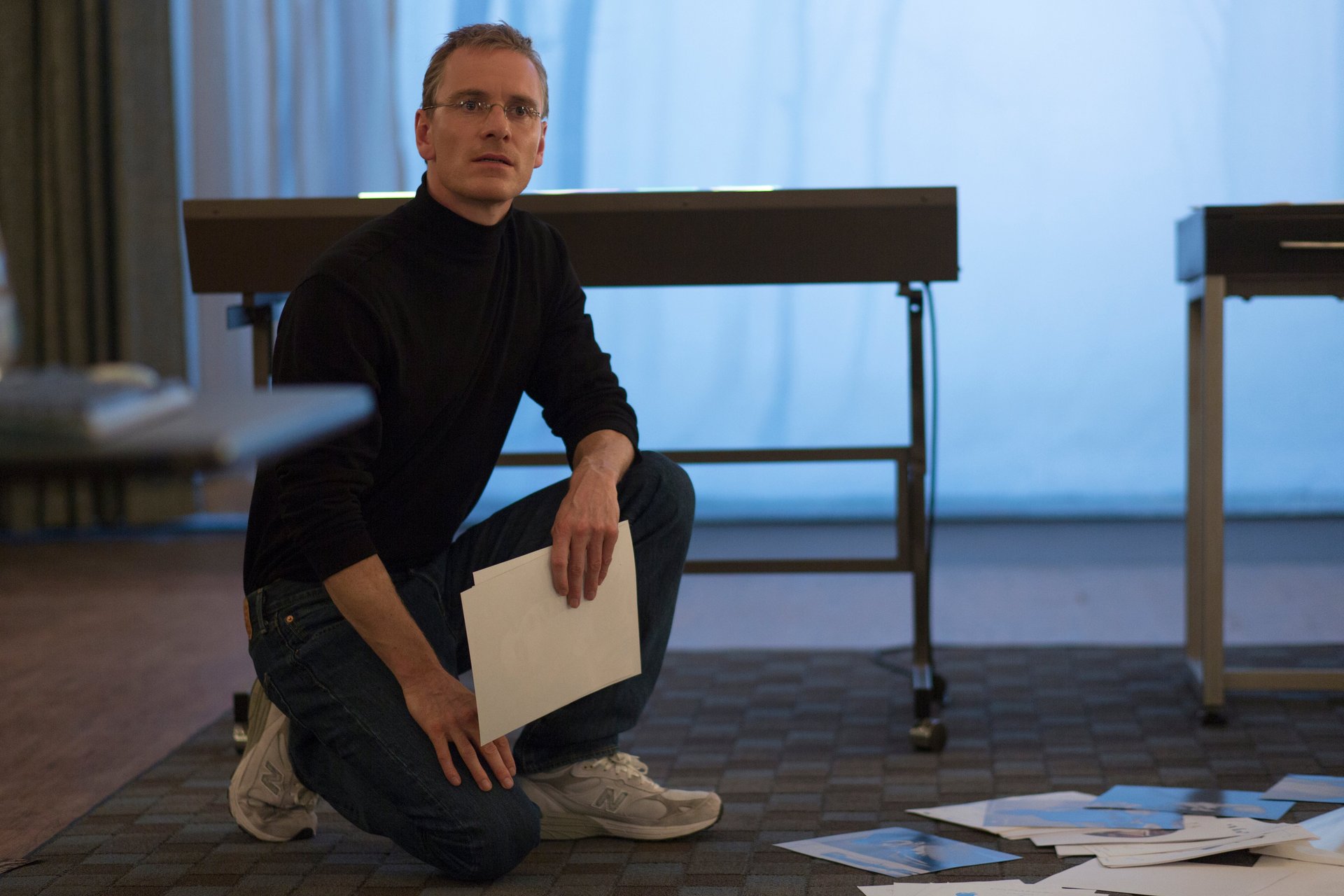
Real life
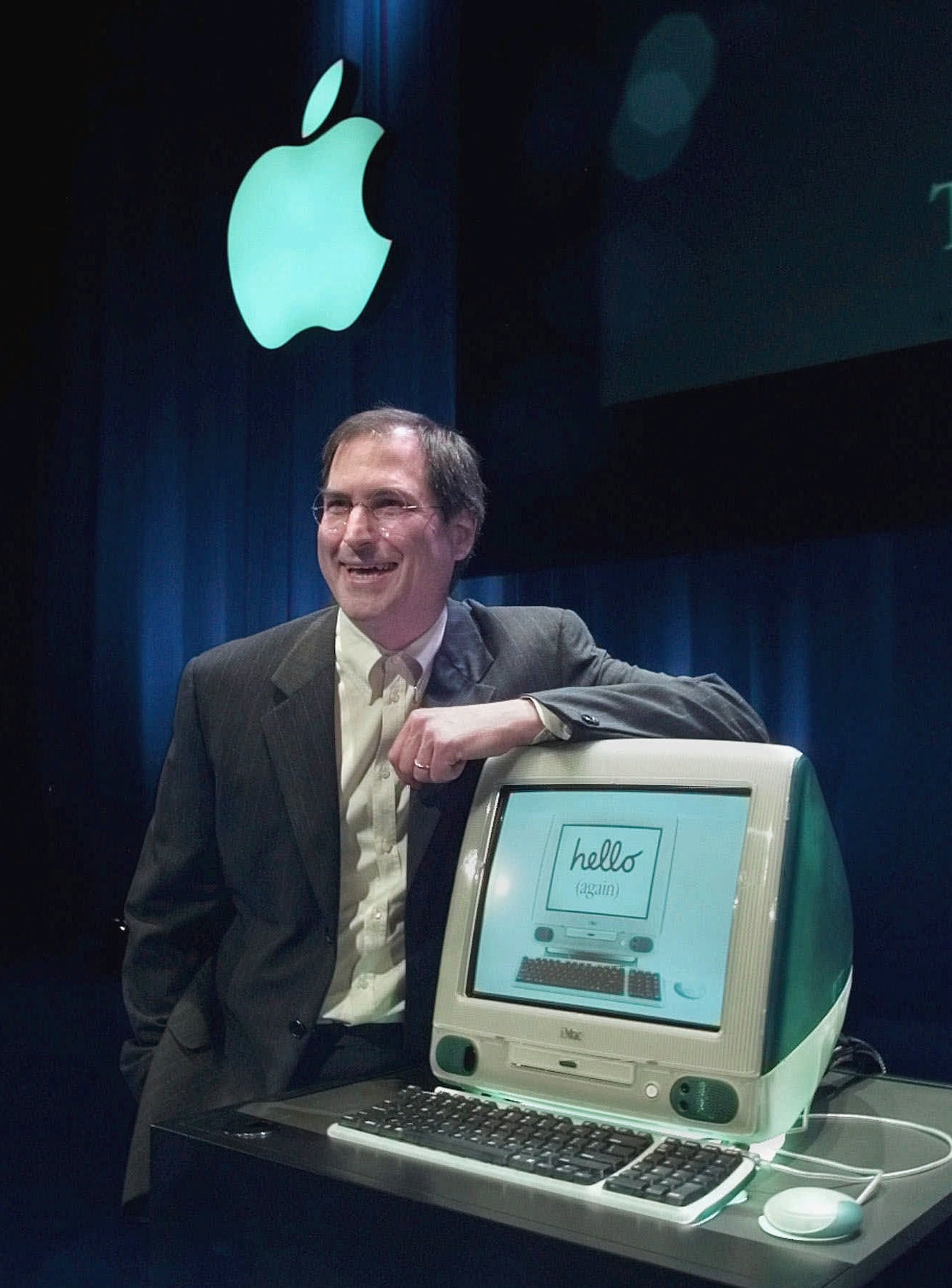
This one is just wrong. The filmmakers decided to conflate the 2000s-era Jobs, in his black-and-blue uniform, with this 1998 launch.
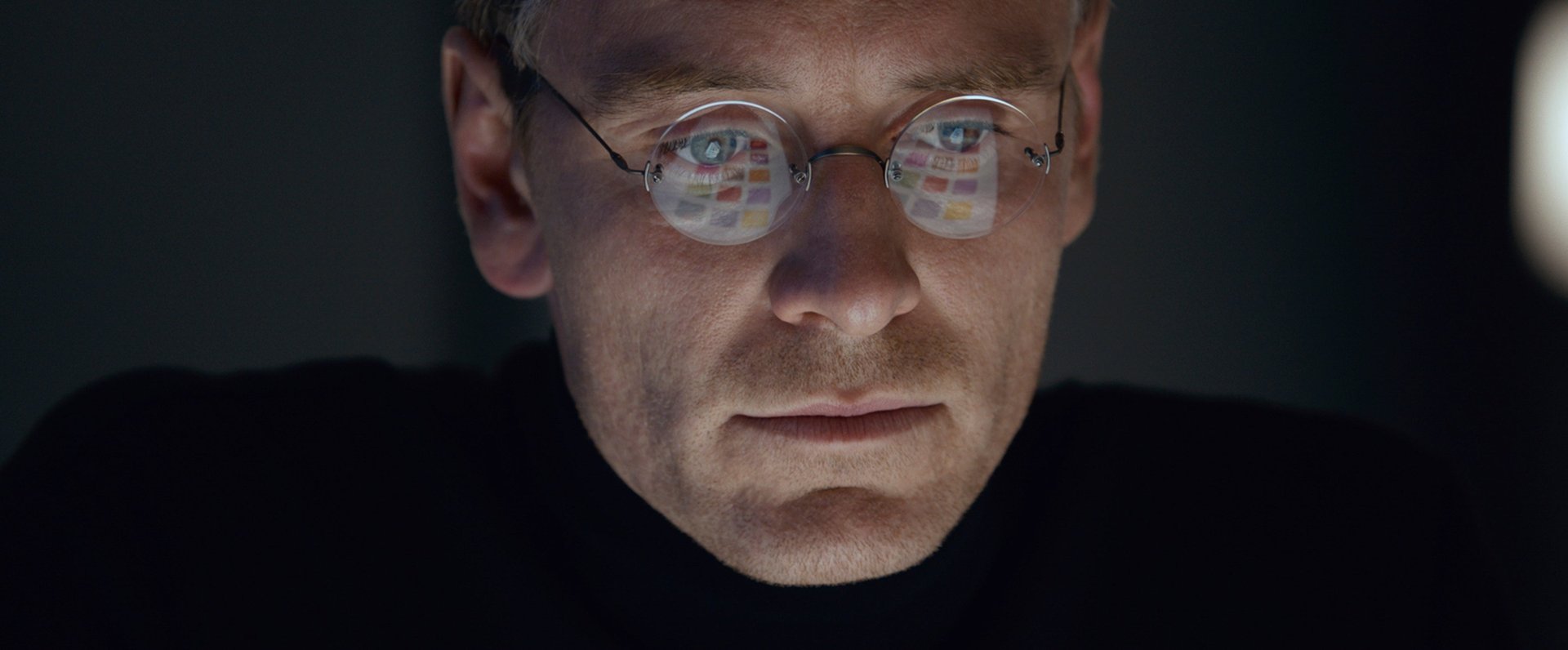
In another weird piece of prolepsis, the filmmakers seem to be hinting at the iPhone/iPad/iPod app future with this shot. In the reflection of Jobs’ Robert Marc glasses, we can see a series of colored pieces of paper, arranged very specifically on a lightboard. It wasn’t clear what Jobs was meant to be doing with these in the film, but it does a look a lot like an iPhone homescreen.
Bonus: later in 1998
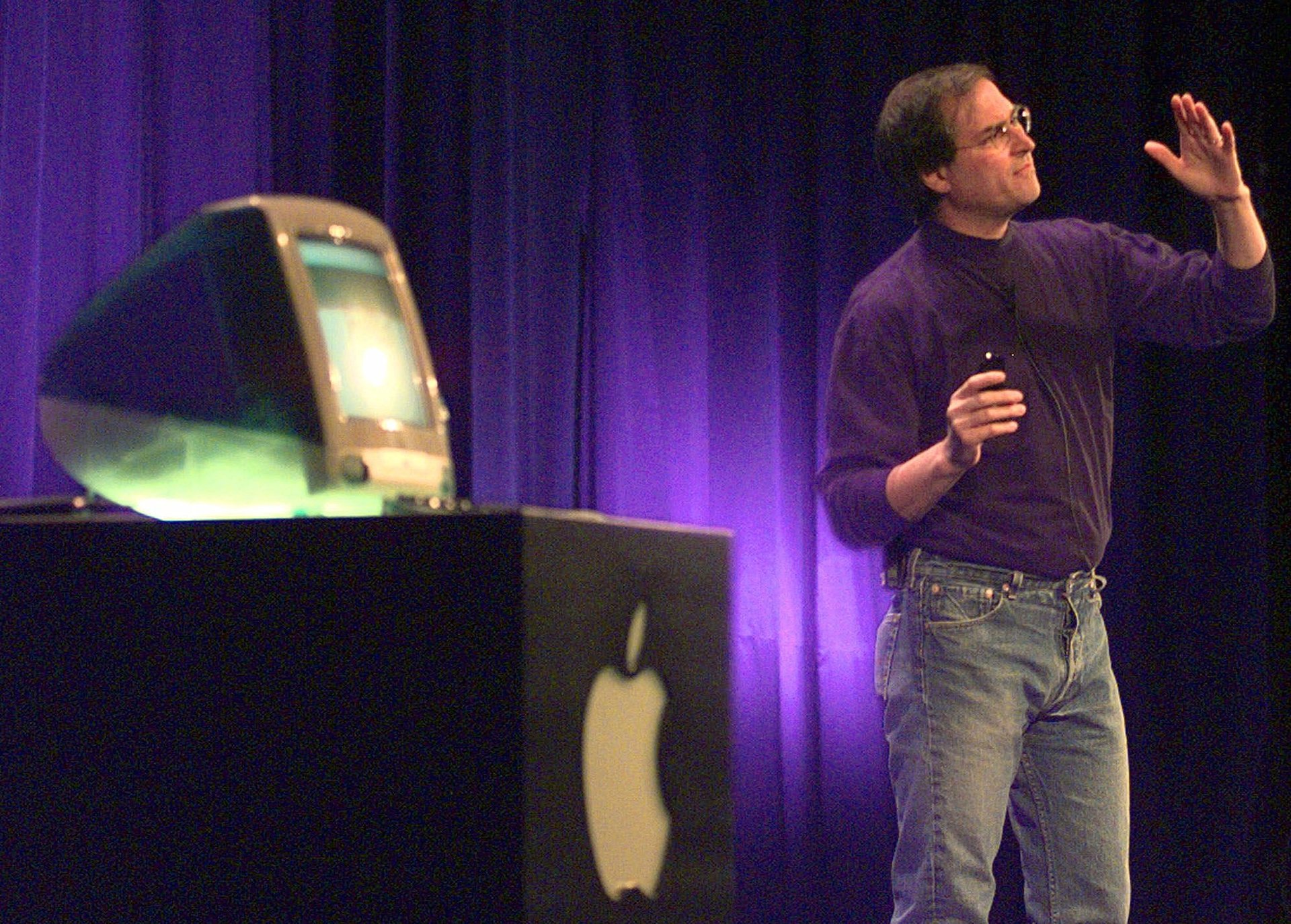
This picture is from October 1998, five months after the launch of the iMac. It’s worth noting that 1998 does indeed seem to be the year that Jobs became the minimalistic style icon he is remembered to be, wearing only Issey Miyake-designed mock-turtlenecks, Levi’s 501 jeans and New Balance sneakers more or less every day until his passing. He just hadn’t started doing that when he launched the iMac.